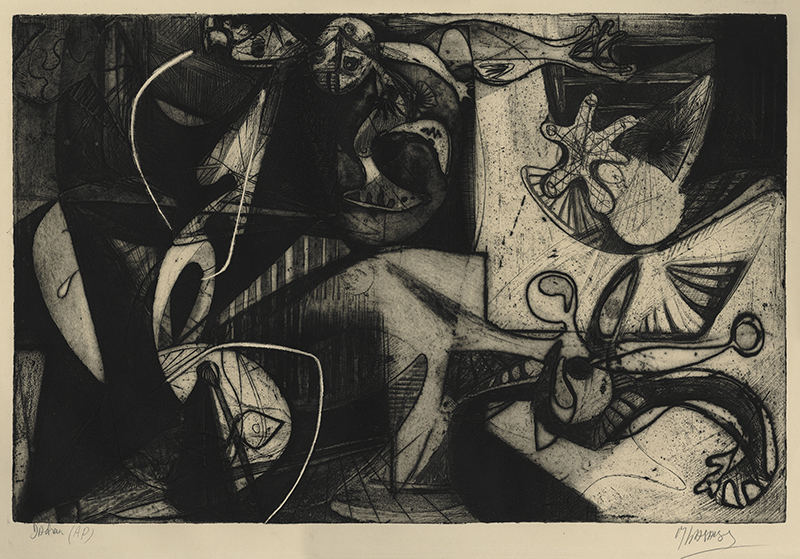
19th, 20th & 21st Century Fine Prints
707-546-7352 · fax 707-546-7924 · web: www.annexgalleries.com · email: artannex@aol.com
Dachau by Mauricio Lasansky

Dachau
Mauricio Lasansky
Dachau
Mauricio Lasansky
1914 - 2012 (biography)Mauricio Lasansky, born to Eastern European Jewish parents living in Argentina, was deeply disturbed by the atrocities of the Holocaust and, immediately following the war, he created this intaglio as well as the “For an Eye an Eye” series to address his despair, and to grapple with his anger toward global bystanders and the hypocrisy of the Church. It was a theme he would return to in the early 1960s when he created his best-known series, “The Nazi Drawings.”
Lasansky’s deep compassion for the struggles of oppressed people often played out on the plate, and he created works that, while difficult in subject matter, were expressed with the kind of tenderness that one might expect in imagery of a religious nature or of portraits of beloved family members. His early printmaking years were informed by a need for innovation, as he was not able to access much of the tools readily available to students in more modern cities such as New York and Paris. Owing to this, his compositions take on as much intention as his subjects. Despite the horrors it reflects, “Dachau” is a work that springs directly from the artist’s heart, through the lens of art, generosity of spirit, and a desire to remind the world to do better.
For those who do not know, Dachau was a Nazi concentration camp located in Dachau, Bavaria. Prisoners lived in constant fear of brutal treatment and terror detention including standing cells, floggings, the so-called tree or pole hanging, and standing at attention for extremely long periods. There were 32,000 documented deaths at the camp, and thousands more that are undocumented. The main camp was liberated by U.S. forces on 29 April 1945.
